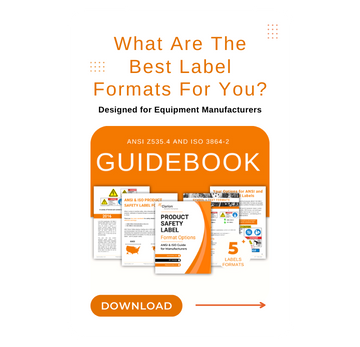

Ensuring Best PPE Practices in the Workplace
When employers require their workers to use personal protective equipment (PPE), safety signs should be used to reinforce that training, reminding workers of safe workplace practices.
Visual Reminders that Support Training
Our leadership on the ANSI and ISO committees responsible for safety sign formats and symbols sets our PPE signs apart from other suppliers. We understand how to construct the content and visually communicate the information you need to properly reinforce your PPE training.
Most PPE signs in use today are word-message-only signs that say things like, “HARD HATS REQUIRED,” or “WEAR EYE PROTECTION.” Not only do these signs blend into the background of the thousands of word message signs people see and tend to ignore in the course of a normal day, but these signs are also unlikely to communicate their message across language barriers.
Clarion Safety’s signs are different. We incorporate either the internationally prescribed safety symbols or we use symbols that we’ve created or refined to accurately convey safety messages related to PPE. Whether you purchase our standard or customized personal protective equipment safety signs, you’ll know they’re backed by our unparalleled knowledge of the standards and how the standards are practically applied to effectively communicate safety in various industries.
How to Create a PPE Compliance Program
A PPE compliance program that is effective considers such factors as worker safety, compliance with applicable laws and company standards and technical feasibility. A risk assessment is a good way to identify hazards and consider solutions. It’s also important to understand the limitations of PPE. It doesn’t eliminate the hazard, and it’s only effective if the equipment is appropriate, worn correctly, and worn when necessary. With that in mind, an effective PPE program will include the following features:
- Hazard and risk assessment
- Attempts to control the hazard
- The selection of effective PPE
- A robust training and education program
- The use of signage to reinforce PPE usage
- Vigorous monitoring of the program
Even though workers stand to lose the most by not using PPE, it’s easy for workers to become complacent over time. Common excuses for not wearing PPE include the equipment doesn’t fit right or takes too much time to put on, or the task is not that dangerous. Therefore, an effective program must find ways to reinforce the use of protective equipment on a regular basis. PPE signage is required in several circumstances, but it can also be used effectively to remind workers to wear their equipment .
OSHA on Communicating the Need for PPE
The OSHA regulations for PPE safety signs read as follows:
1910.132 D (1) The employer shall assess the workplace to determine if hazards are present, or are likely to be present, which necessitate the use of personal protective equipment (PPE). If such hazards are present, or likely to be present, the employer shall: 1910.132 D (1)(i) Select, and have each affected employee use, the types of PPE that will protect the affected employee from the hazards identified in the hazard assessment; 1910.132 D (1)(ii) Communicate selection decisions to each affected employee.
